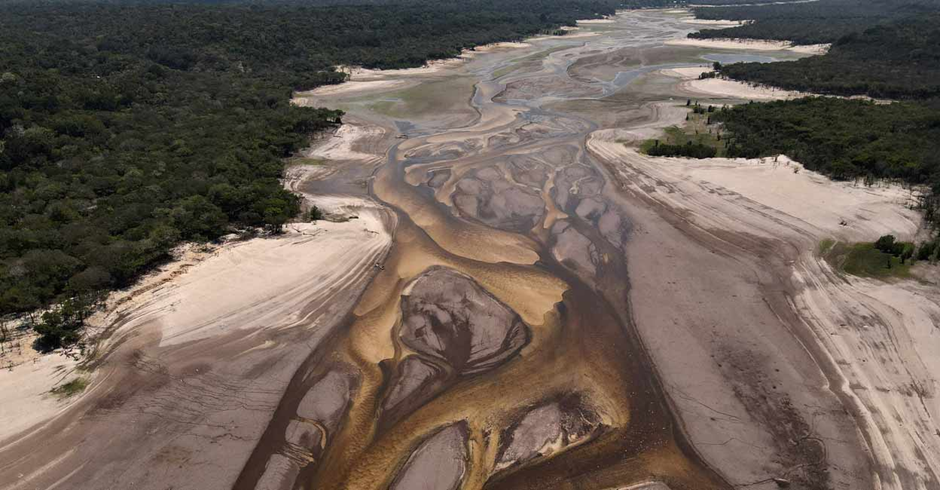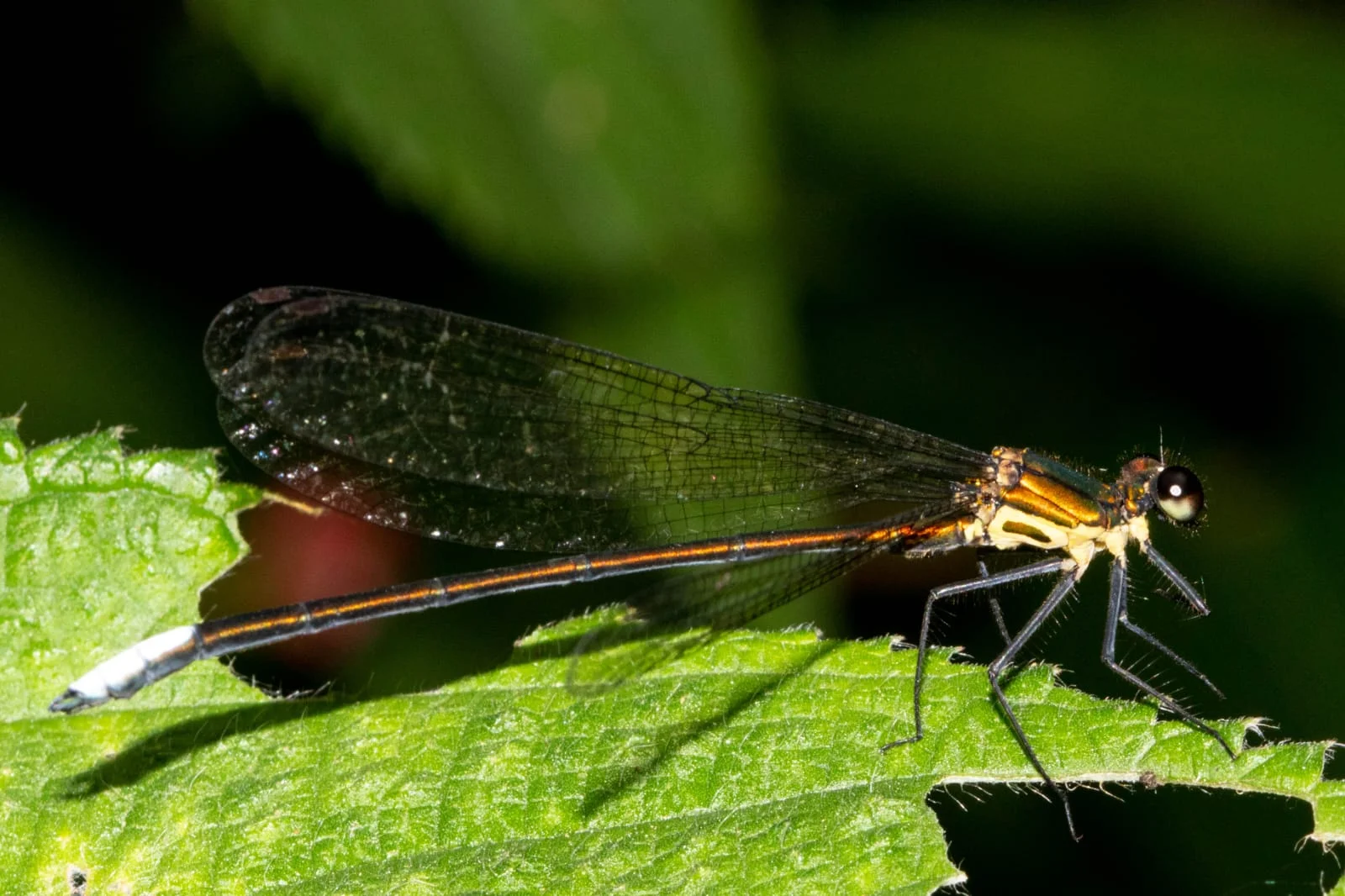- Courses
- GS Full Course 1 Year
- GS Full Course 2 Year
- GS Full Course 3 Year
- GS Full Course Till Selection
- Online Program
- GS Recorded Course
- NCERT (Recorded 500+ Hours)
- Polity Recorded Course
- Geography Recorded Course
- Economy Recorded Course
- AMAC Recorded Course
- Modern India, Post Independence & World History
- Environment Recoded Course
- Governance Recoded Course
- Science & Tech. Recoded Course
- International Relations and Internal Security Recorded Course
- Disaster Management Module Course
- Ethics Recoded Course
- Essay Recoded Course
- Current Affairs Recoded Course
- CSAT
- 5 LAYERED ARJUNA Mentorship
- Public Administration Optional
- ABOUT US
- OUR TOPPERS
- TEST SERIES
- FREE STUDY MATERIAL
- VIDEOS
- CONTACT US
World's largest Amazon River is Drying
World's largest Amazon River is Drying
09-09-2024

The Amazon River, the world's largest river by volume and length, is facing a severe environmental crisis. Prolonged drought conditions and insufficient rainfall have led to unprecedented drops in river levels across the Amazon basin.
- This has significant implications for local communities, navigation, and the broader ecological balance of the region.
Current Situation:
-
Decline in River Levels
- Rio Negro: In Manaus, the depth of the Rio Negro has decreased from 24 meters last year to 21 meters this year. This reduction has raised concerns among industries in the Free Trade Zone, which are calling for urgent dredging to avoid transportation disruptions.
- Madeira River: The Madeira River, a major tributary of the Amazon, has seen its depth remain below two meters in Porto Velho, Rondonia state, since July. This is significantly lower than the typical 5.3 meters, severely affecting navigation.
-
Impacts on Transportation
- Dredging Initiatives: The Department of Transport Infrastructure (DNIT) has begun dredging critical points on the Madeira River and plans to extend these efforts to the Amazon and Solimoes rivers. This is to mitigate disruptions similar to those experienced last year.
- Shipping Costs: Consultancy ARGUS warns that ongoing drought conditions may force rerouting of grain shipments to southern and southeastern Brazilian ports, leading to increased shipping costs for producers.
-
Community and Environmental Impact
- Isolation: Reduced navigability is isolating communities across the Amazon, hindering their access to essential supplies like food.
- Agricultural and Fishing Impacts: Crops are suffering due to water shortages, and declining fish populations are impacting riverside communities that rely on fishing for their livelihoods.
-
Climatological Factors
- Drought Conditions: Climatologist Jose Marengo highlights that the current drought conditions are unprecedented. Rivers have shrunk to levels that isolate entire communities.
- La Niña Phenomenon: The anticipated increase in rainfall due to the La Niña phenomenon has not occurred. The Pacific waters have not cooled as expected, exacerbating the crisis in the Amazon.
-
Impact on "Flying Rivers"
- Moisture Transport: The lack of rain is affecting the "flying rivers" – atmospheric moisture transport from the Amazon rainforest to other parts of Brazil. This has further implications for rainfall patterns in southern regions.
About the Madeira River
-
Geographical Overview
- Formation: The Madeira River is formed by the junction of the Mamoré and Beni rivers at Villa Bella, Bolivia, and flows northward.
- Borders: It forms the border between Bolivia and Brazil for approximately 60 miles (100 km).
- Basin: The Madeira River is part of the Madeira Basin, which covers about 1,300,000 square kilometers (502,000 square miles), representing roughly 19% of the entire Amazon Basin. The basin extends across Bolivia, Brazil, and Peru, with approximately 50% of its area in Bolivia, 40% in Brazil, and 10% in Peru.
-
Significance
- Hydrological Role: As the largest tributary of the Amazon River, the Madeira River plays a crucial role in the hydrology of the Amazon Basin, supporting a diverse range of flora and fauna across Bolivia and Brazil.
What is Hydrology?
-
Definition
- Hydrology: Hydrology is the scientific study of water on Earth's surface and subsurface. It includes the occurrence, movement, and distribution of water, its physical and chemical properties, and its interactions with living and material components of the environment.
-
Importance
- Water Cycle: Hydrology helps in understanding the water cycle, which is vital for managing water resources, predicting weather patterns, and addressing environmental challenges.
Implications and Recommendations
-
Urgent Action
- Dredging and Infrastructure: Immediate action is required to dredge critical waterways to ensure navigation and prevent further disruptions in transportation. Extending dredging efforts to key rivers in the Amazon basin is essential.
- Adaptation Strategies: Developing and implementing adaptation strategies to mitigate the impacts of drought and changing rainfall patterns is crucial. This includes enhancing water management practices and supporting affected communities.
-
Environmental and Community Support
- Support for Affected Communities: Providing aid to isolated communities and addressing the impacts on agriculture and fisheries should be prioritized.
- Monitoring and Research: Increased monitoring and research on river levels, rainfall patterns, and environmental impacts will be essential for formulating effective responses and policies.
Conclusion
The current crisis facing the Amazon River and its tributaries underscores the urgent need for comprehensive action to address the impacts of severe drought and changing climatic conditions. By focusing on immediate infrastructure needs, supporting affected communities, and investing in long-term adaptation strategies, it is possible to mitigate the effects of this environmental crisis and safeguard the vital ecosystems and livelihoods dependent on the Amazon basin.
Must Check: Best IAS Coaching In Delhi
UPSC Prelims Result 2024 Out: Expected Cut Off & Other Details, UPSC Prelims 2024 Answer with Explanation, Daily Prelims Quiz, Daily Current Affairs, MONTHLY CURRENT AFFAIRS TOTAL (CAT) MAGAZINE, Best IAS Coaching Institute in Karol Bagh, Best IAS Coaching Institute in Delhi, Daily Mains Question Answer Practice, ENSURE IAS UPSC Toppers, UPSC Toppers Marksheet, Previous Year Interview Questions, UPSC Syllabus




